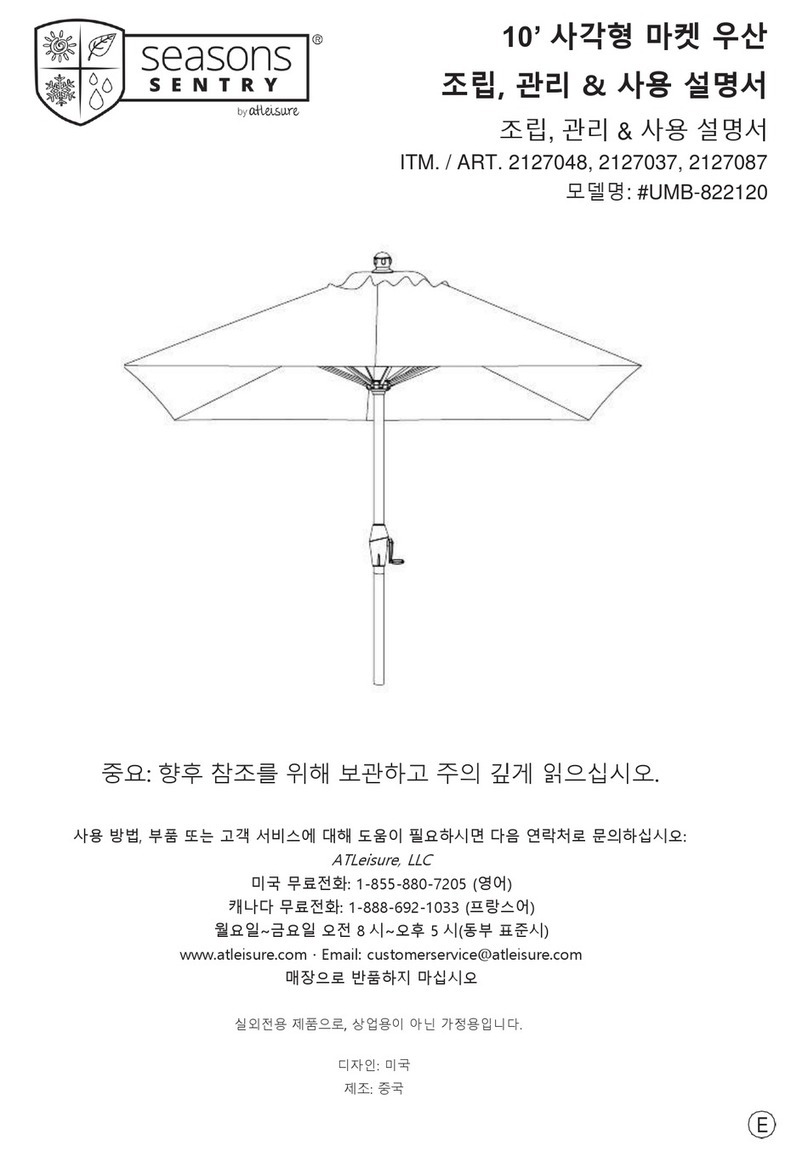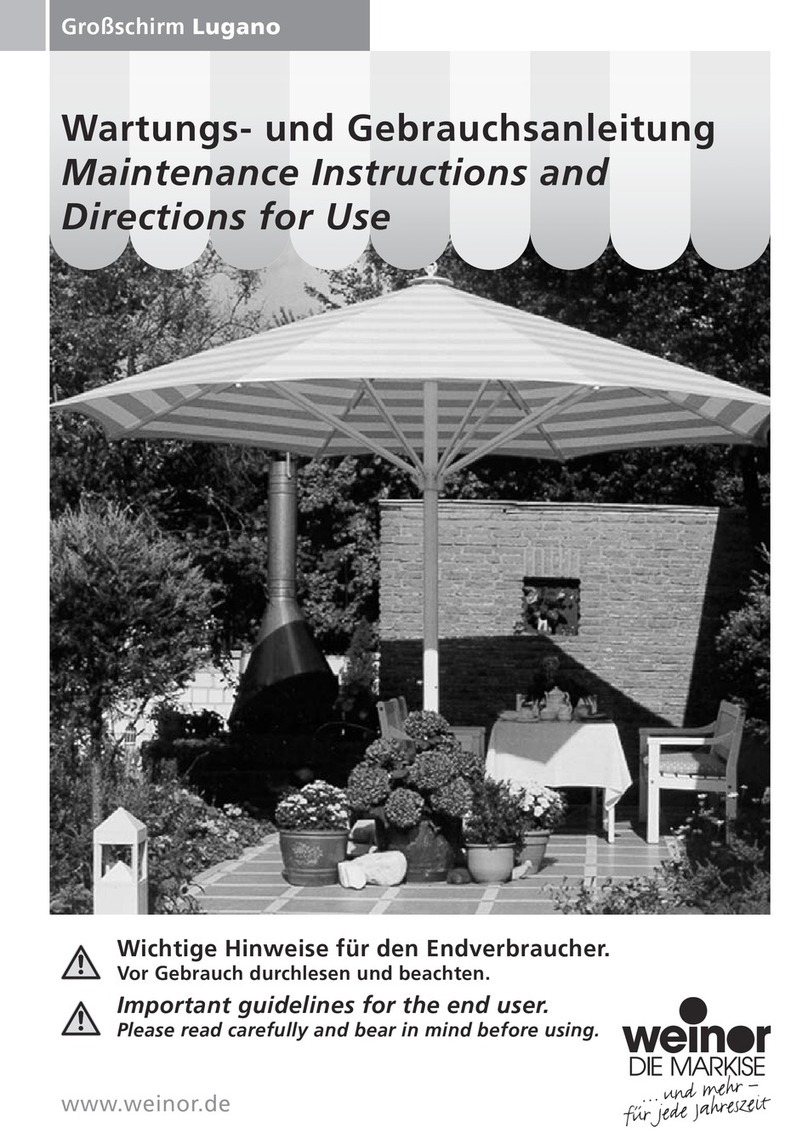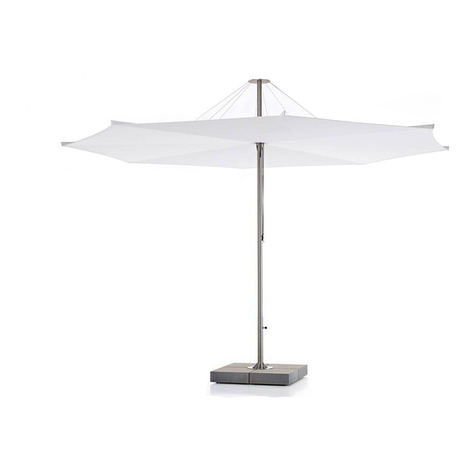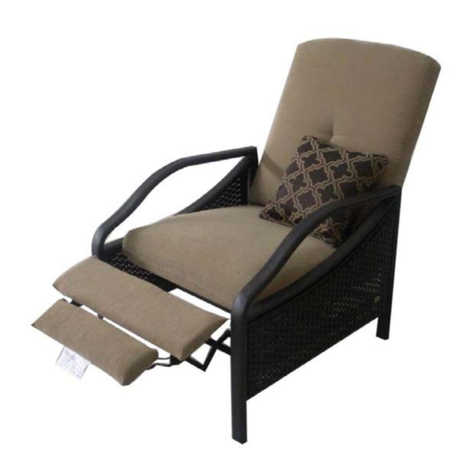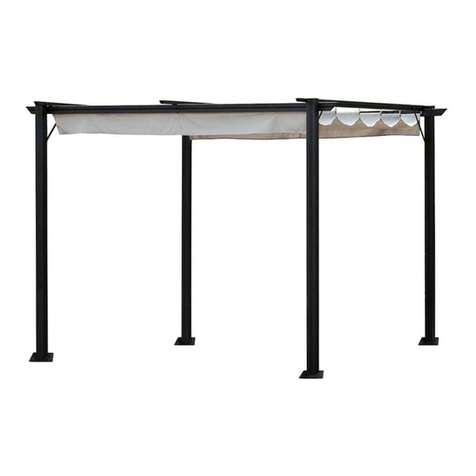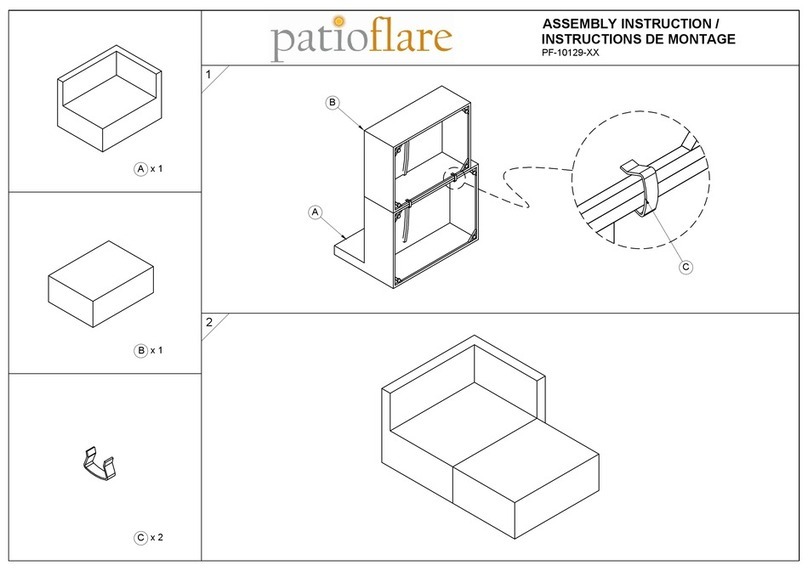
the LARGE-SIZE
parasol
6
// As to the REFOLDED & SECURED (harnessed) configuration of the Jumbrella structure:
If you disregard the proper refolding, fabric-gathering, spiralling and harnessing steps as described in
the ”very important” sub-paragraphs 4.5 through 4.7 herein above (in, for instance, just refolding the structure
without executing all indispensable subsequent fabric and structure-securing steps), this will –sooner or later –
result in unnecessarily premature heavy damages to and, eventually, destruction of the fabric membrane, such
damages and/or destruction indicating the characteristic ”fluttering effects”.
They are caused by countless impacts of wind acting on the non-gathered and non-secured (non-”quieted”) fabric
sections of the membrane over weeks and months, or e.g. overnight, regularly. Unfailingly visible signs of
commencing fluttering damages are several few centimetres long, salient crack-like horizontal traces spaced
parallel to each other and all of them to the outer edgeline of the membrane, accumulating all about the
(theoretical) radial centreline within in each section of the membrane. In the final stages of the evolution of
fluttering damages, a large, more or less triangular band of cracks and even physical tears, whose lengthes will
have grown up to 20-50 cm and beyond, extends from the zenith (of the structure) down to and, if membrane
equipped with valance, beyond the roof edgeline of each major fabric section concerned. –By experience,
fluttering damages and, eventually, complete destruction are the most frequent reason for as unnecessary as
premature wear and tear of any fabric membrane. It’s an aerodynamical peculiarity of fabric membranes
damaged or destroyed by fluttering effects that the leeward fabric sections (”leeward” to be referenced to the
permanent position of a structure relative to the yearly average direction of winds registered locally/regionally)
are damaged sooner and throughout more severely than the ”windward” fabric sections. //
5.2 Provided the selected original Bahama footing component has been set, cast in, preassembled and/or mounted
on site in compliance with the manufacturer’s drawings, their written supplementary instructions and/or other
written type-related recommendations issued by the factory, the properly unfolded, tensioned & locked
Bahama Jumbrella is capable of withstanding unusually high wind velocities (see model-associated wind limits
–varying relative to both model/size and type of footing component selected/applied –published in the
respective catalogues/brochures).Unless heavy winds, storms, thunderstorms or the like have been forecast
on TV or radio, it is not recommended to unnecessarily (re-) fold & secure the properly unfolded & tensioned
structure.Opposed to the widely spread opinion according to which daily unfolding & refolding decreases wear
and tear and be, consequently, apt to extend the endurance particularly of the fabric membrane, latter –even
though more exposed to weathering –lives the longer the less frequently the Jumbrella is refolded overnight.
5.3 Should you already be caught in a storm or a typical squall front (typical of preceding a thunderstorm), don’t
try (surely with the presumedly best intentions) to detension & refold the Jumbrella: Apart from the augmented
risk of an accident (with bodily injuries), the probability of damaging or even destroying the structure, in part
or in whole, under already prevailing heavy-wind conditions is by far higher than the one of the structure getting
damaged or destroyed as it is in its unfolded & fully tensioned configuration. As a rule of thumb: Never ever try
to detension and refold the Jumbrella under already prevailing heavy-wind or storm conditions!
5.4 Procurement of spare/replacement parts: No matter which part or parts might be required, always advise your
supplier of the Jumbrella structure(s) of its(their) unmistakable serial number(s) to make sure that costly errors
or misunder-standings are precluded.You’ll spot the serial number (SNR) embossed on the stainless-steel brand
plate that is on the exterior carriage body (on major pole), a hand’s breadth above the tension latches (operator
side).–
© 2017 Bahama GmbH, Germany.
Any and all product- or procedure-related changes are subject to manufacturer’s editorial amendment
without prior notice.»BAHAMA« is an internationally Registered Trademark of BECHER Textil- & Stahlbau
GmbH, Germany.–This document including its contents and terminologies, in whole or in excerpt, shall not
be copied or duplicated, nor otherwise be reproduced without prior written authorization by Bahama
GmbH, Germany.
Bahama GmbH
Tel +49 (0)2265 998 0 made in germany
www.bahama.de D-51580 Reichshof issued & printed in 05/2017

